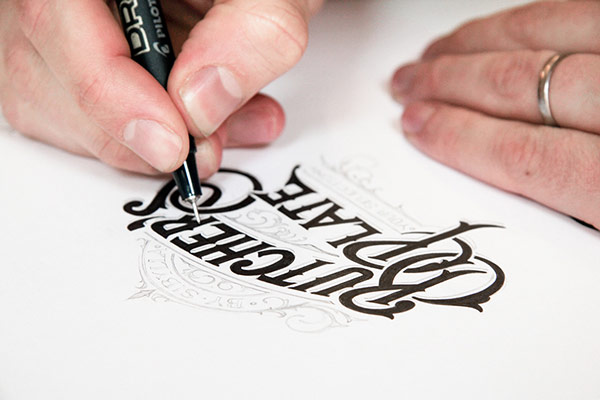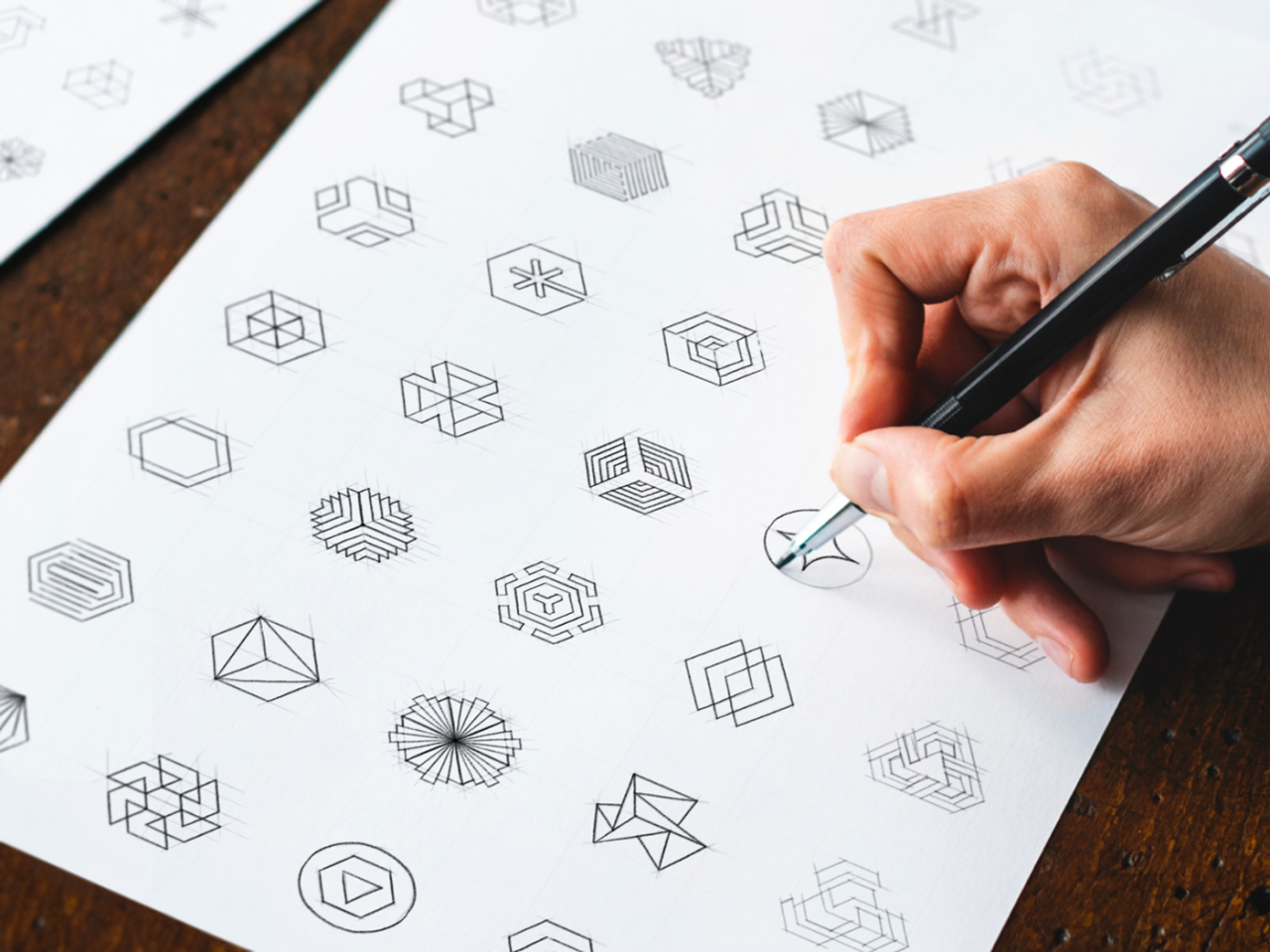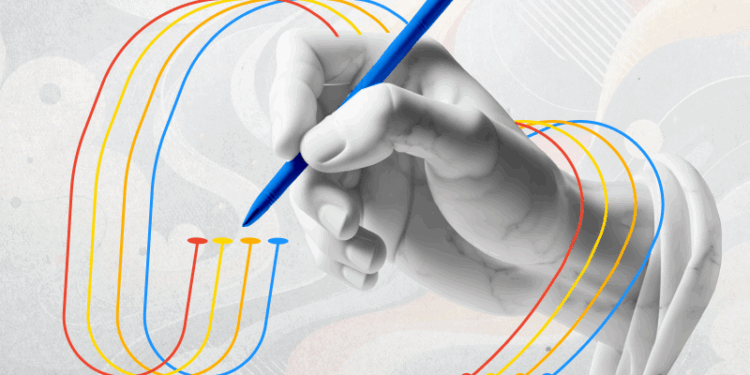In a world saturated with digital perfection, where every brand strives for a sleek, geometric, and pixel-perfect identity, there is a powerful counter-movement gaining momentum. It is a return to the roots of craftsmanship and authenticity, a celebration of the human touch in a sea of sterile uniformity. This movement is defined by the rise of the hand-drawn logo. More than just a design trend, a hand-drawn logo is a statement. It tells a story of care, tradition, and genuine personality in a way that no mass-produced, templated icon ever could.
A hand-drawn logo is a unique mark of individuality. It’s a purposeful act of imperfection that creates a profound emotional connection with an audience. It whispers of a brand’s heritage, speaks of its artisanal quality, and signals a commitment to something more than just fast, transactional commerce. For businesses looking to stand out in a crowded market, a custom-designed, handcrafted logo is not just a choice—it’s an essential strategy for building a timeless, authentic brand identity.
This comprehensive guide is a deep dive into the art and business of hand-drawn logos. We will explore the enduring psychological allure of the human touch, break down the core principles that define this craft, and provide a step-by-step guide to the design process. We will also examine the strategic advantages and the kinds of brands that are using this powerful tool to build an authentic and lasting connection with their customers.
The Enduring Allure of the Human Touch

The appeal of a hand-drawn logo is not just a matter of aesthetics; it is rooted in deep psychological principles that tap into our collective human experience.
A. The Paradox of the Digital Age: Craving Authenticity
The very technologies that have made our lives so efficient have also created a sense of detachment. We communicate through screens, shop in virtual stores, and are bombarded with thousands of generic, computer-generated images every day. In this context, anything that signals a human hand behind the curtain feels rare and precious. A hand-drawn logo serves as a beacon of authenticity. It is a visual signal that a brand is not a faceless corporation but a group of people who care deeply about what they do. This human connection is a powerful antidote to digital fatigue and a key differentiator in a competitive market.
B. The Emotional Connection of Imperfection
The most beautiful thing about a hand-drawn logo is its imperfection. The slight wobble in a line, the subtle variation in a curve, the unique texture of a sketch—these are not flaws; they are proof of a human hand at work. These imperfections evoke an emotional response of warmth, trust, and relatability. They tell the customer that the brand is real, honest, and approachable. In contrast, a logo that is perfectly geometric and sterile, while professional, can sometimes feel cold and distant. A hand-drawn mark feels alive, a one-of-a-kind creation that can never be perfectly replicated.
C. Hand-Drawn Logos as Storytellers
Every great brand has a story, and a handcrafted logo is a powerful visual expression of that narrative. Whether it’s the rustic feel of a distillery’s emblem that speaks of its heritage, or the playful font of a children’s brand that promises fun and creativity, the style of the hand-drawn elements can immediately communicate a brand’s values, history, and personality. It’s not just a symbol; it’s a piece of art that invites the customer into the brand’s world. This form of brand storytelling is far more compelling than a generic icon and builds a deeper, more memorable relationship with the audience.
Core Principles of Hand-Drawn Logo Design
Creating a great hand-drawn logo is an art that requires a blend of creative freedom and technical precision. While it embraces imperfection, it is by no means a careless or messy process. These core principles are essential for success.
A. The Power of Authenticity
This is the most important principle. A hand-drawn logo must feel authentic to the brand it represents. It should not be a forced aesthetic or a trendy gimmick. The designer must delve into the brand’s story, its values, and its target audience to create a mark that is a genuine reflection of its soul. For a brand that prides itself on craftsmanship and heritage, a hand-drawn emblem is a natural and powerful choice.
B. The Art of Imperfection
The beauty of a hand-drawn mark lies in its unique, human qualities. Designers should avoid over-correcting every line or trying to make the mark look too “perfect” in the digital phase. The subtle wabi-sabi of a pencil stroke or the slight curve in a line are what give the logo its character and charm. The designer’s role is to refine these imperfections so they are intentional and beautiful, not careless.
C. The Importance of Legibility and Scalability
Despite their organic nature, hand-drawn logos must still be professional and functional.
- Legibility: The logo, particularly a hand-drawn wordmark, must be easy to read at a glance. The letterforms should be unique but not so stylized that they become illegible.
- Scalability: A great logo must work across a wide range of applications, from a small favicon on a website to a massive billboard. The lines and details must be clean enough to shrink down without becoming a pixelated mess. This is why the vectorization process is so critical.
D. The Role of Typography
In many cases, a hand-drawn logo is a typographic one, where the letters themselves are the design. This is an opportunity for the designer to create custom lettering that is unique to the brand. This requires a deep understanding of letterforms, spacing, and hierarchy. It’s an incredibly powerful way to create a one-of-a-kind mark that is impossible to copy.
E. The Narrative of the Mark
Every element of the logo, from the illustration to the typeface, should contribute to the brand’s story. For a coffee roaster, a hand-drawn image of a coffee bean or a rustic banner might tell a story of small-batch care. For a wedding photographer, a delicate, script-like typeface might speak of elegance and romance. The designer’s job is to craft a visual narrative that resonates with the audience and creates a lasting impression.
The Hand-Drawn Logo Design Process
Creating a hand-drawn logo is a meticulous process that bridges the analog world of paper and pencil with the digital world of vectors and software.
A. Research and Conceptualization
The process begins, as all great design does, with a deep understanding of the client and their brand.
- The Brand Audit: The designer must research the brand’s history, values, and target audience. What emotions should the logo evoke? What story does it need to tell?
- Brainstorming and Mood Boards: The designer gathers visual inspiration, from images and textures to other logos and typography. This helps to define the style, mood, and feel of the project before a single line is drawn.
B. Sketching: The Foundation of the Craft
This is the most critical and time-consuming part of the process. It’s where the idea takes form.
- From Thumbnails to Refined Sketches: The designer starts with a large number of rough, quick thumbnail sketches to explore as many ideas as possible. These sketches are about ideas, not perfection. They are then refined into more detailed sketches that define the final direction of the logo. A great designer might fill dozens of pages with sketches before finding the perfect one.
- The Importance of a Sketchbook: A physical sketchbook is an essential tool. It provides a tactile, non-linear medium for creative exploration. The freedom of drawing on paper without the constraints of a digital tool is what allows for the organic, human feel of the final product.
C. Digitization and Vectorization
Once the refined sketch is complete, it’s time to bring it into the digital world.
- Scanning: The sketch is scanned or photographed at a high resolution to preserve every detail.
- Vectorization: The designer uses software like Adobe Illustrator or Affinity Designer to trace the sketch with vector paths. This is a crucial step. It’s not about using an auto-trace function, which would lose the logo’s character, but about manually drawing the lines and curves with a digital tool to create a clean, scalable vector graphic that retains the human qualities of the original sketch.
D. Refining and Polishing
The digital version is then polished and refined.
- Clean-up: The designer cleans up any stray lines or imperfections that don’t add to the logo’s character.
- Color and Texture: The designer experiments with different color palettes and textures. A hand-drawn logo can look great with a natural, earthy color palette or with a vibrant, bold one.
- Spacing and Kerning: For a wordmark, the designer meticulously adjusts the spacing between each letter to ensure it is visually balanced and legible.
E. Finalizing for Different Applications
The final stage is preparing the logo for real-world use. This means providing a full suite of files, including:
- Vector files (.ai, .eps, .svg): These are essential for scalability.
- Raster files (.png, .jpg): For use on websites and social media.
- Variations: The designer should provide a vertical and horizontal version of the logo, as well as a simplified mark for use as an icon or favicon.
Types and Styles of Hand-Drawn Logos

The term hand-drawn logo encompasses a wide range of styles, from simple, minimalist marks to intricate, detailed emblems.
A. Hand-Drawn Wordmarks
These logos rely solely on the unique, custom-drawn typeface. The letters themselves are the art. This is a popular choice for brands that want to feel personal, warm, and approachable. ****
B. Hand-Drawn Illustrations and Emblems
This style uses a hand-drawn illustration as the primary logo mark. It can be a simple icon, a detailed character, or a complex scene. These are perfect for brands that have a clear story to tell, like a craft brewery with a mascot or a local farm with an illustration of a barn. ****
C. Hand-Drawn Crests and Seals
This style evokes a sense of tradition, heritage, and timelessness. Crests and seals are often used by brands that want to communicate a legacy of quality and craftsmanship, such as distilleries, artisanal coffee roasters, and high-end fashion brands.
D. Hand-Drawn Typographic Logos
This is a blend of custom lettering and a hand-drawn illustration. The two elements are often intertwined, with the illustration woven into the letters themselves, creating a cohesive and highly unique piece of art.
The Business and Branding Case for Custom Logos
In a sea of generic visual identities, a custom hand-drawn logo provides a powerful strategic advantage.
A. Standing Out in a Saturated Market
The world is full of logos that look alike. A custom-designed logo, by its very nature, is a one-of-a-kind creation. It is impossible to replicate, and it instantly helps a brand stand out and become memorable.
B. Building an Emotional Connection with Your Audience
A generic logo can signal a generic product. A hand-drawn logo can signal an emotional and personal connection to the brand. It tells the customer that this product was made with care and love, and that the brand stands for something more than just profit. This is the foundation of a loyal customer base.
C. The Power of Hand-Drawn in Niche Industries
The hand-drawn logo aesthetic is particularly effective in industries where a sense of authenticity and craftsmanship is highly valued. This includes:
- Artisanal Food and Beverage: Craft breweries, coffee roasters, and small-batch distilleries.
- Creative and Service-Based Businesses: Freelance artists, photographers, and creative agencies.
- Boutique and Lifestyle Brands: Handmade jewelry, custom clothing, and independent furniture makers.
- Luxury and Heritage Brands: Those that want to evoke a sense of tradition and timeless quality.
Conclusion
The journey of creating a hand-drawn logo is a beautiful and intentional process. It is a powerful reminder that in an increasingly automated world, the human touch remains our most valuable asset. The slightly uneven lines, the deliberate texture, and the unique, un-replicable character of a hand-drawn mark are not flaws—they are the very source of its strength. They tell a story of authenticity, craftsmanship, and a deep, personal connection to a brand’s purpose.
For designers, mastering this craft is a way to create work that is not just aesthetically pleasing but also profoundly meaningful. For businesses, choosing a hand-drawn logo is a bold declaration to their audience that they value genuineness over perfection, soul over convenience, and art over automation. It’s an investment in a brand’s identity that will pay dividends for years to come.
As the digital landscape continues to evolve, the value of the unique and the authentic will only increase. A hand-drawn logo is a timeless piece of design that transcends trends. It’s a statement that a brand is here to stay, with a story worth telling and a heart worth connecting with. The craft of the hand-drawn logo is a testament to the fact that in a world of endless digital possibilities, the most powerful and enduring creations are still born from the simple, intentional act of a human hand on a piece of paper.






